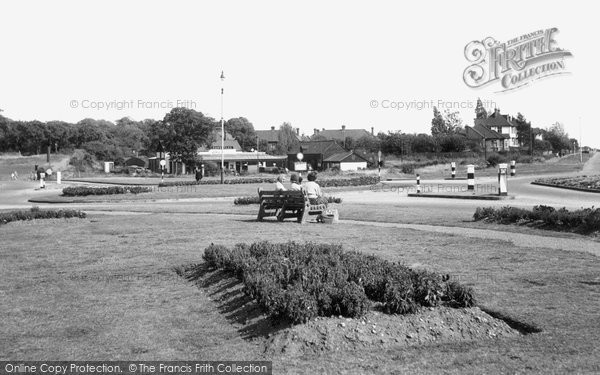St. John Ambulance Brigade, First Aid Post,
A Memory of Grays.
The St. John Ambulance Brigade of Grays Thurrock had three wooden first aid posts that they manned over bank holidays and summer weekends which were along what was the main road from East End of London running through to Southend-on-Sea.
They were painted white and when manned and flew the brigade flag on a small mast attached to the huts. The windows were protected by wooden shutters which were held in place by bolts fastened from the inside when closed.
They were normally manned by one or two nursing sister's and the same number of adult male ambulance members with a nursing cadet and a ambulance cadet. from 9:00am to 9:00pm.
They were equipped with large first-aid bags with bandage's, dressings, splints, and other first aid materials and a stretcher. Inside was a cold water supply and gas burner to boil a kettle for hot water.
The first post was located at Aveley at the junction where the main road from London divided and went into Grays via. West Thurrock. The second post was at Socketts Heath, a little to the rear of the flower bed in this postcard before you reached the Daneholes Roundabout. The third and final post was just outside Stanford-le-Hope at the junction leading to the railway station and centre where the new bypass road began.
This was before the age of mobile telephones and we did not have transport so the cadets role was to help carry equipment from the post to an incident within a couple of miles either way of the post. It was not unknown for a vehicle to stop and alert us taking members to the incident.
The cadets role apart from making tea was to collect the key for the hut from a local residence open up and hoist the flag to show we were on duty and to close up and return the key at the end of the day. We had two teams on duty one for the morning turn and one for the afternoon turn. In their day they provided an excellent first aid service which attended many incidents over the years. The advent of the motorways and the mobile phone saw the need for such a service diminish.
The brigade extended its first aid service to the increasing number of public events that came into being in the years after the WWll from motor cycle racing to pop concerts, and other forms of public entertainment where crowds gathered and a need for a first aid presence was desirable.
I went into the RAF Fire and Rescue Service in 1953 and kept up my First Aid qualification sitting my annual first aid tests for a further 24 years. It stood me in good stead during my RAF service and also in my civilian life when I became a Railway man and a Retained Leading Fireman.
Add your comment
You must be signed-in to your Frith account to post a comment.
Add to Album
You must be signed in to save to an album
Sign inSparked a Memory for you?
If this has sparked a memory, why not share it here?




Comments & Feedback
Be the first to comment on this Memory! Starting a conversation is a great way to share, and get involved! Why not give some feedback on this Memory, add your own recollections, or ask questions below.